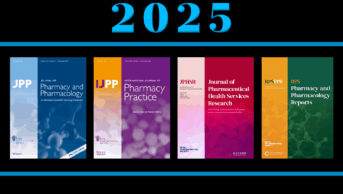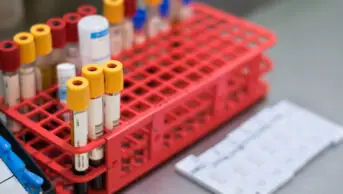With January, and the start of New Year’s resolutions behind us, I have been reflecting on Abraham Maslow’s theory of human motivation, first published in 1943. In it, Maslow argued that human needs form a hierarchy composed, firstly, of physiological needs related to survival (e.g. food, drink, sleep), followed by safety needs (e.g. physical, economic, psychological security), the need for love and belonging (e.g. affection, intimacy, roots within a group), esteem (e.g. competence, self-respect and respect by others), and finally, self-actualisation; the latter defined as the human desire for self-fulfilment and developing one’s potential. Since its conception, the theory has received criticism; for example, for lacking empirical evidence to support it. Criticisms aside, I can’t help but see the model for its intrinsic appeal in attempting to neatly summarise what humans need, not only to survive in the world, but to thrive and become all that they are capable of becoming.
A few years ago, academics in the United States used Maslow’s hierarchy to imagine pharmacy within an improved healthcare delivery model. For me, however, the model has strong personal resonance for its implication that people can become self-actualisers by working at something that they love and, to me, this runs the risk of the individual becoming the embodiment of their work and their main identity becoming that of their job. Thought of in this way, is it always easy to distinguish ‘self-actualising’ from workaholism? I wonder what proportion of New Year’s resolutions made this year were to work less and focus on the self, rather than to strive for ever more work, under the guise of self-actualisation. With more positive thoughts of resolutions and advancements in mind, my focus this month is on papers that examine improvements on existing methods, processes or practices.
The first paper, published in Journal of Pharmacy and Pharmacology, is an exploration of “various measures of the area under the curve for the assessment of dose-proportionality and estimation of bioavailability”. Pharmacokinetic studies, broadly speaking, involve the use of equations and data to model drug concentrations within the body over time. The authors of this paper argue that while it is optimal to use a complete area under the concentration versus time curve (AUC) for a given drug from the point of dosing extrapolated to infinity, in order to conduct this modelling, it is not always possible to estimate a crucial element of the curve, namely the terminal-phase half life. The risks are described as significant downstream errors in the estimation of other pharmacokinetic parameters and concerns about the accuracy of measuring dose-proportionality and bioavailability. The paper caught my attention because it challenged and attempted to address existing methods for calculating drug levels in the body. The authors conclude that, with linear kinetics, they would expect the use of AUCt’ (instead of the terminal phase half-life) to provide a reliable measure of dose proportionality, where tʹ is defined “as the longest period of time that the lowest dose could be measured for blood fluid concentrations”. This is justified because, with linear kinetics, the same kinetic pattern of concentration versus time would exist between doses. I leave readers to read the rest of the paper for further details.

The second paper, published in the International Journal of Pharmacy Practice, is a “before-after study to evaluate the effect of pharmacy workflow redesign to improve pharmacy waiting time and reduce medication near misses in Malaysia”. These are laudable aims. After all, the authors highlight, waiting times impact on patient satisfaction and perceptions of the quality of pharmacy services provided. Having identified an inefficient workflow design as the root cause of delays in the dispensing of medication at the ambulatory pharmacy of Queen Elizabeth Hospital in Malaysia, the authors set out to investigate the impact of a redesigned workflow on both pharmacy waiting times and near-misses. The redesign involved filling medication before transcribing them into the computer system, storing medication alphabetically, providing additional computers and staff training, and changing the pharmacy layout, including the storage of co-collected items together. What a triumph then, that comparing data from 210,530 prescriptions, the authors report a significant increase in the percentage of prescriptions dispensed within 30 minutes each day, as well as finding a significant reduction in the mean percentage of near-missed events. There is some further analysis detailed in the paper, namely the effect of prescription numbers received and server disruptions on waiting times, and the effect of pharmacy personnel numbers and controlled medications prescribed on the near-miss events. While it is clearly not possible to control numerous factors that can impact on the work of a pharmacy, it is reassuring to read studies such as this that illustrate the continual drive for improving our services.
The final paper, published in RPS Pharmacy and Pharmacology Reports, is about “controlling chloroform content to a safe level in a pharmaceutical oral solution of chloral hydrate”. Although the use of chloral hydrate in medical practice may not be common, where it is used, the authors argue there is an association with high levels of the carcinogen chloroform being formed as a degradation product, via hydrolysis. What is more, the authors state that the European Pharmacopoeia monograph for chloral hydrate oral solution (an unlicensed medicine) does not include a criterion for chloroform quantification, meaning specials manufacturers of such a product risk the safety of patients given such a formulation. Their key finding is that the rate of formation of chloroform can be reduced by controlling the impact of pH on the stability of the oral solution. Creating a “more stabilised finished product of chloral hydrate 500mg/5ml oral solution” by introducing a citric acid/sodium citrate buffering system, the authors’ main finding is that the mildly acidic solution, stored at a temperature of 25°C, results in a stable and palatable product that meets a safe chloroform specification.
Are we self-actualising in pharmacy? It certainly seems to me that, collectively, we are becoming what we are capable of becoming, and long may it continue.


